Question
Which among the following is the correct combination?
Study the following information carefully and answer the questions given below. Eight persons are sitting in two parallel rows facing towards each other. In row 1 – A, B, C, and D are sitting and facing towards north while in row 2 – P, Q, R, and S are sitting and facing towards south, but not necessarily in the same order. They like different colours – Red, Yellow, Green, Blue, Black, Orange, White and White. Only one person sits between A and the one who faces the one who likes white, who doesn’t sit at the ends of the row. D sits immediate right of the one who faces the one who likes white. Only one person sits between Q and the one who faces D. P is the only neighbour of the one who faces the one who likes yellow, who doesn’t face Q. C sits second to the left of the one who faces the one who likes red, which is not liked by R. The one who likes green sits to the left of C, who doesn’t like orange. D neither likes blue nor white. As many persons sit to the right of B as to the left of the one who likes orange.Solution
We have, Only one person sits between A and the one who faces the one who likes white, who doesn’t sit at the ends of the row. D sits immediate right of the one who faces the one who likes white From this condition, there are two possibilities 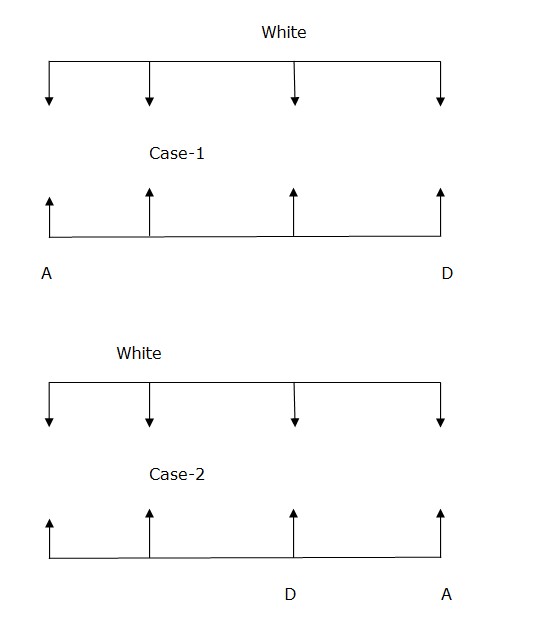 Again we have, Only one person sits between Q and the one who faces D. P is the only neighbour of the one who faces the one who likes yellow, who doesn’t face Q.
Again we have, Only one person sits between Q and the one who faces D. P is the only neighbour of the one who faces the one who likes yellow, who doesn’t face Q. 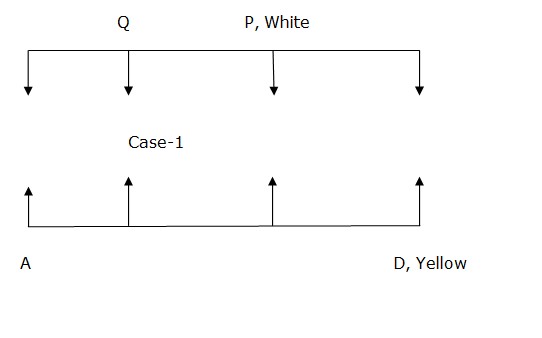
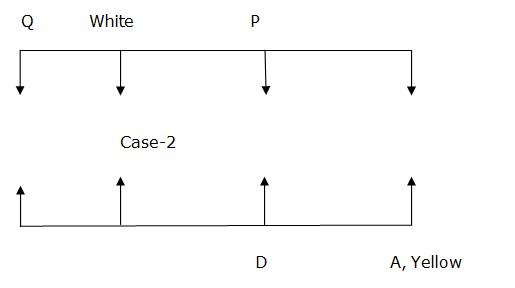 Again we have, C sits second to the left of the one who faces the one who likes red, which is not liked by R. The one who likes green sits to the left of C, who doesn’t like orange. D neither likes blue nor white. As many persons sit to the right of B as to the left of the one who likes orange from the above condition, case 1 gets eliminated. Hence, case 2 shows the final arrangement.
Again we have, C sits second to the left of the one who faces the one who likes red, which is not liked by R. The one who likes green sits to the left of C, who doesn’t like orange. D neither likes blue nor white. As many persons sit to the right of B as to the left of the one who likes orange from the above condition, case 1 gets eliminated. Hence, case 2 shows the final arrangement. 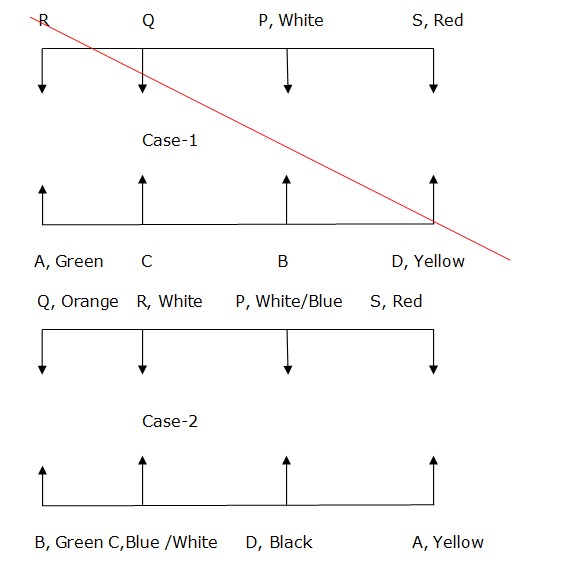 So final arrangment-
So final arrangment- 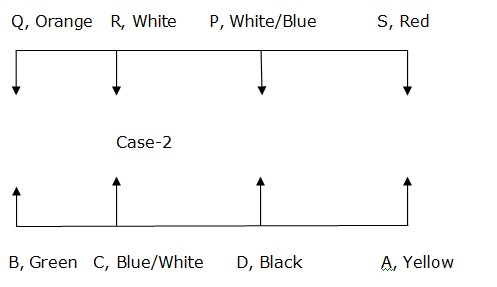
In the sentence identify the segment which contains the grammatical error.
Saraswati college has maintained its reputation as one of the best col...
Care for the kids (A)/at school has never (B)/ been tiring, as I was (C)/born with a talent for it (D).
A creeper that once give (A)/a monk’s robe its (B)/saffron hue have made (C)/ a Buddhist village in eastern Assam’s Charaideo district (D)/adapt a ...
The following sentence has been split into four segments. Identify the segment that contains a grammatical error.
Won’t you / please come /...
In the sentence identify the segment which contains the grammatical error.
I can swim very fast when I was only five.
With raising greenhouse gases, their impact can only intensify. Heatwaves may become more frequent ; good action plans can help prepare for the worst. <...
A motley crew of (A)/hapless musicians and street performers (B)/are seen trying to show up citizens (C)/in what appears to be a breadline (D).
Find the correct sentence.
Before the alarm(1)/ had stopped ringing(2) Reena had(3)/ pulled up the shade.(4)
The committee of experts, along with their assistants, were /reviewing the final report and will submit/ it to the board next week after they/ has finis...



